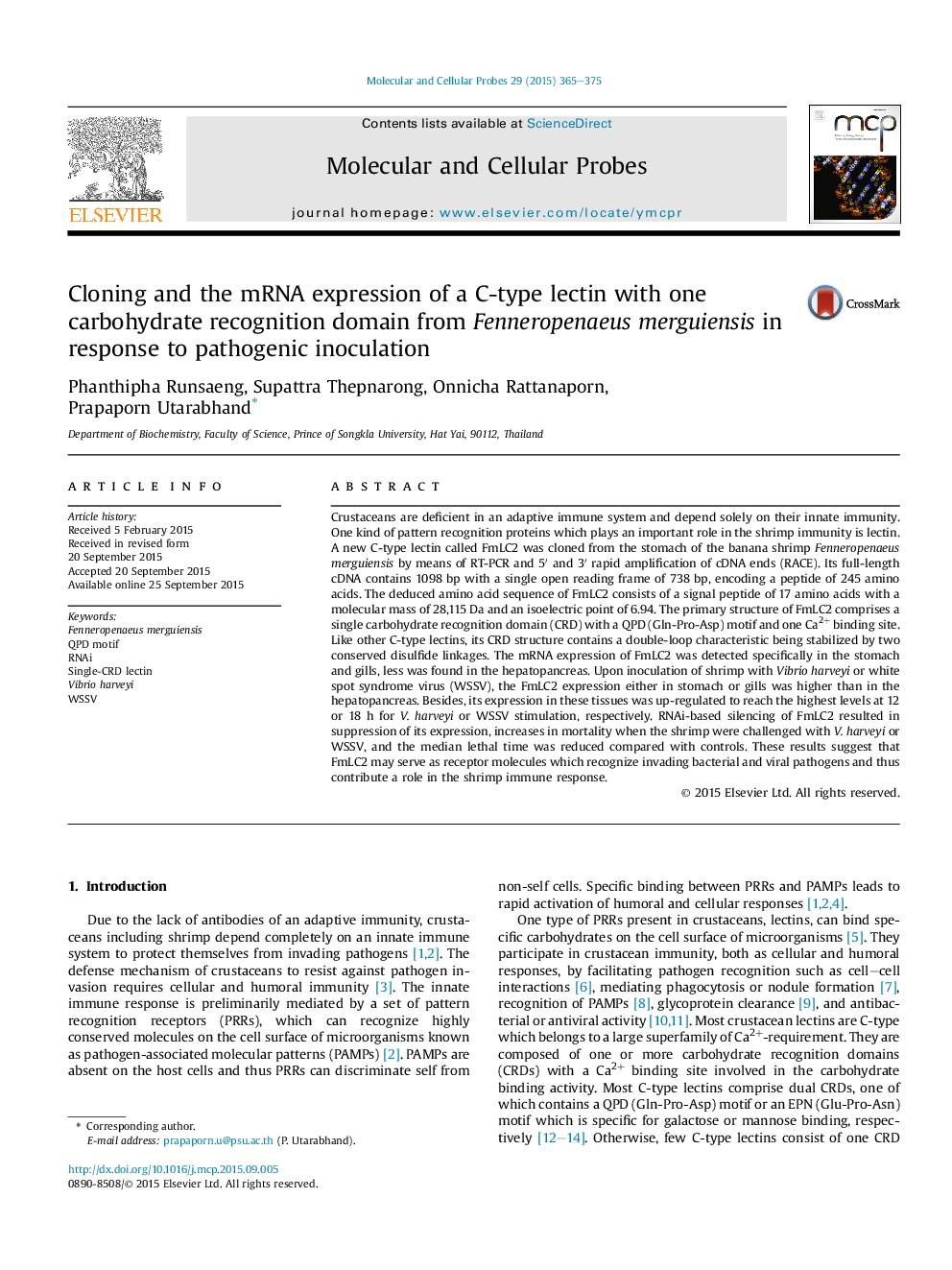| کد مقاله | کد نشریه | سال انتشار | مقاله انگلیسی | نسخه تمام متن |
|---|---|---|---|---|
| 10957678 | 1099600 | 2015 | 11 صفحه PDF | دانلود رایگان |
عنوان انگلیسی مقاله ISI
Cloning and the mRNA expression of a C-type lectin with one carbohydrate recognition domain from Fenneropenaeus merguiensis in response to pathogenic inoculation
دانلود مقاله + سفارش ترجمه
دانلود مقاله ISI انگلیسی
رایگان برای ایرانیان
کلمات کلیدی
موضوعات مرتبط
علوم زیستی و بیوفناوری
بیوشیمی، ژنتیک و زیست شناسی مولکولی
بیولوژی سلول
پیش نمایش صفحه اول مقاله

چکیده انگلیسی
Crustaceans are deficient in an adaptive immune system and depend solely on their innate immunity. One kind of pattern recognition proteins which plays an important role in the shrimp immunity is lectin. A new C-type lectin called FmLC2 was cloned from the stomach of the banana shrimp Fenneropenaeus merguiensis by means of RT-PCR and 5Ⲡand 3Ⲡrapid amplification of cDNA ends (RACE). Its full-length cDNA contains 1098 bp with a single open reading frame of 738 bp, encoding a peptide of 245 amino acids. The deduced amino acid sequence of FmLC2 consists of a signal peptide of 17 amino acids with a molecular mass of 28,115 Da and an isoelectric point of 6.94. The primary structure of FmLC2 comprises a single carbohydrate recognition domain (CRD) with a QPD (Gln-Pro-Asp) motif and one Ca2+ binding site. Like other C-type lectins, its CRD structure contains a double-loop characteristic being stabilized by two conserved disulfide linkages. The mRNA expression of FmLC2 was detected specifically in the stomach and gills, less was found in the hepatopancreas. Upon inoculation of shrimp with Vibrio harveyi or white spot syndrome virus (WSSV), the FmLC2 expression either in stomach or gills was higher than in the hepatopancreas. Besides, its expression in these tissues was up-regulated to reach the highest levels at 12 or 18 h for V. harveyi or WSSV stimulation, respectively. RNAi-based silencing of FmLC2 resulted in suppression of its expression, increases in mortality when the shrimp were challenged with V. harveyi or WSSV, and the median lethal time was reduced compared with controls. These results suggest that FmLC2 may serve as receptor molecules which recognize invading bacterial and viral pathogens and thus contribute a role in the shrimp immune response.
ناشر
Database: Elsevier - ScienceDirect (ساینس دایرکت)
Journal: Molecular and Cellular Probes - Volume 29, Issue 6, December 2015, Pages 365-375
Journal: Molecular and Cellular Probes - Volume 29, Issue 6, December 2015, Pages 365-375
نویسندگان
Phanthipha Runsaeng, Supattra Thepnarong, Onnicha Rattanaporn, Prapaporn Utarabhand,